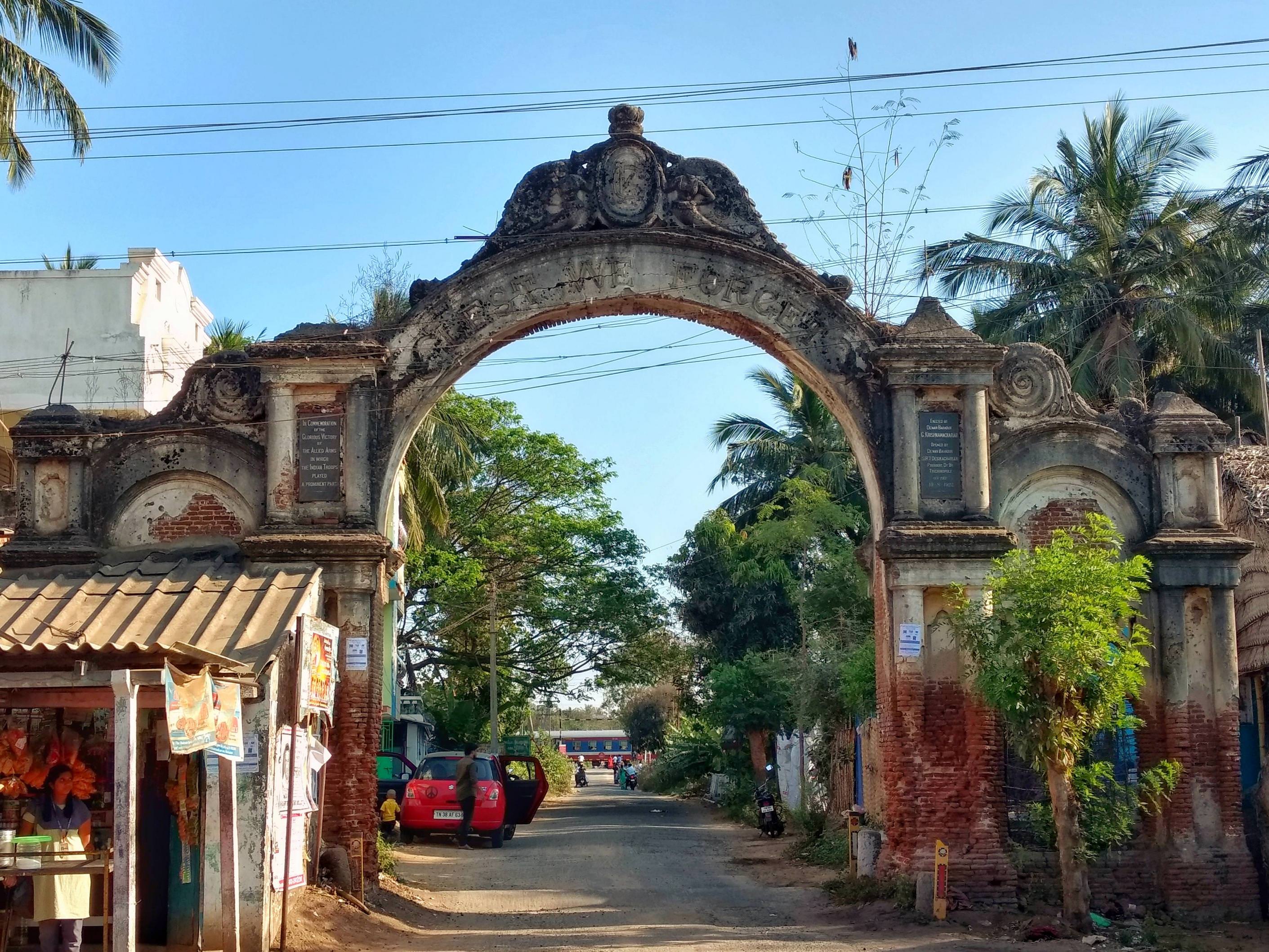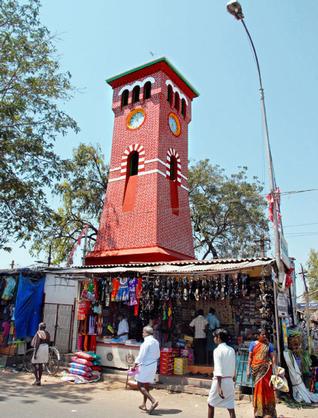This WW1-Era Ruin has ‘Lest We Forget’ Written On It. And We Need To Pay Heed!
Located in a nondescript village in Trichy, this structure was built 95 years ago for a truly intriguing reason.

Has India done an adequate job of remembering the valiant actions of its soldiers? One can point towards memorials built for Indian soldiers killed in defence of the 70-year-old Republic and other public honours bestowed upon them to make a case that India indeed remembers.
The decrepit state of a World War I (WW1) commemorative arch erected in Valady village in Tiruchirappalli (Trichy) district, Tamil Nadu, for 302 soldiers from the nearby areas, may suggest otherwise.
Post-Independence, the Indian armed forces have not only maintained the nation’s sovereignty but also honoured the core ideals of democracy. As this article suggests, a lot of credit for the latter achievement also goes to the nation’s founding fathers. Admittedly, there are instances where this institution has failed to live up to these ideals, but for the most part, their record deserves credit.
Thus, their sacrifices in the line of duty are duly remembered by one and sundry. When the question comes to Indian soldiers who participated in the two biggest wars of the 20th century, the nation’s collective memory has often proven to be fickle.

The lack of any Indian-built memorial of note for the soldiers killed in action during World War I and II bears testimony to this fact. In Delhi, the British erected the famous India Gate for those Indians who died in the First World War (WW1).
Unlike Australia, why haven’t we honoured the 1.3 million India soldiers who fought valiantly in WW1?
When its 50th anniversary had come around in 1964, New Delhi wasn’t comfortable with the idea of honouring Indian soldiers who had volunteered to fight for the very colonial empire that India broke away from.
Decades later, things have taken a different turn. “For many Indians, curiosity has overcome the fading colonial-era resentments of British exploitation. We are beginning to see the soldiers of World War One as human beings, who took the spirit of their country to battlefields abroad,” writes Member of Parliament Shashi Tharoor for the BBC.
In fact, the Centre for Armed Forces Historical Research in Delhi is on a mission to remember the oft-ignored story of the 1.3 million Indian soldiers who fought in places and against enemies far removed from their everyday realities and under incredibly tough conditions for little more than professional pride.
Days after the war was declared, Indian soldiers were on the frontline repelling the Prussian advance at Ypres in 1914 even before the British had their own troops ready. As a consequence of Winston Churchill’s error in judgement, nearly 1,000 Indian soldiers were slain on the shores of Gallipoli in Turkey. More than 600,000 Indian jawans fought in the Mesopotamia against the Ottoman Empire.
“The British raised men and money from India, as well as large supplies of food, cash and ammunition, collected both by British taxation of Indians and from the nominally autonomous princely states. In return, the British had insincerely promised to deliver progressive self-rule to India at the end of the war. Perhaps, had they kept that pledge, the sacrifices of India’s soldiers might have been seen in their homeland as a contribution to India’s freedom,” Tharoor adds.
In fact, many of India’s prominent freedom fighters had supported the British war effort in WW1, thanks to the above-stated promise. Is it prudent to castigate them now for the position they took? Not necessarily, one would argue.
Read also: 28 Rare and Amazing Photos of Indian Soldiers from World War I
Commemorative arch in Trichy district
The 95-year-old arch in Valady village, which is lying in ruins, has the words “Lest We Forget” written on its peak. Considering the state in which it’s languishing in, one can’t help but feel a palpable sense of irony.
With parts of it hidden from public view as a result overgrown trees, this arch was erected by Dewan Bahadur G. Krishnamachariar and opened by Sir T. Desikachariar, Trichinopoly District Board president, on August 10, 1922.
Three years earlier, a Great War Memorial Plaque was installed inside a Clock Tower in the present-day Gandhi Market in Trichy.This structure was erected in memory of the 41 soldiers from the city who died in action during World War I.
“In commemoration of the glorious victory of the Allied Arms in which the Indian troops played a prominent part,” reads the inscription on of the pillars supporting the decrepit arch. Despite its historical value, there has been little to no effort in conserving this structure. Local authorities recently claimed that they have no funds to restore or preserve this arch. While municipal authorities worked to restore the Clock Tower in Gandhi Market in 2013, the arch remains ignored.
Serving as a gateway for local folk from nearby villages to access the Lalgudi-Trichy main road, hundreds cross this arch every day without even taking cognisance of its value. “Most of the villagers crossing the arch every day are unaware of its historical importance. Only those who have served and are serving the army know that it commemorates the role of Indian soldiers in World War I including from Tamil Nadu,” M Mookan, an ex-serviceman from Valady, told the Times of India.
As on user on Reddit quipped, “these are exactly the kinds of monuments that should be cleaned and renewed. India should remember the sacrifice its people made for the world we live in.”
Not just their sacrifices, but the spirit of bravery and compassion with which they fought these battles. Reading Tharoor’s take on commemorating Indian soldiers who fought in World War I, one comes across a heart-warming 1918 photograph of an Indian soldier on horseback giving away his rations to a poor starving girl in Mesopotamia

As the Member of Parliament quips, “it embodies the ethos the Indian solider brings to soldiering, whether at home or abroad.”
He harks back to the role they have played in UN peacekeeping missions around the world to further embellish this point.
Symbols are powerful things, and the sight of this commemorative arch being encroached upon by a shop and bricks sends a rather poor message. These are precisely the reasons why restoring and conserving the commemorative arch seems like the right thing to do.
(Edited by Vinayak Hegde)
Like this story? Or have something to share? Write to us: [email protected], or connect with us on Facebook and Twitter.
NEW: Click here to get positive news on WhatsApp!
This story made me
- 97
- 121
- 89
- 167
Tell Us More
We bring stories straight from the heart of India, to inspire millions and create a wave of impact. Our positive movement is growing bigger everyday, and we would love for you to join it.
Please contribute whatever you can, every little penny helps our team in bringing you more stories that support dreams and spread hope.



















